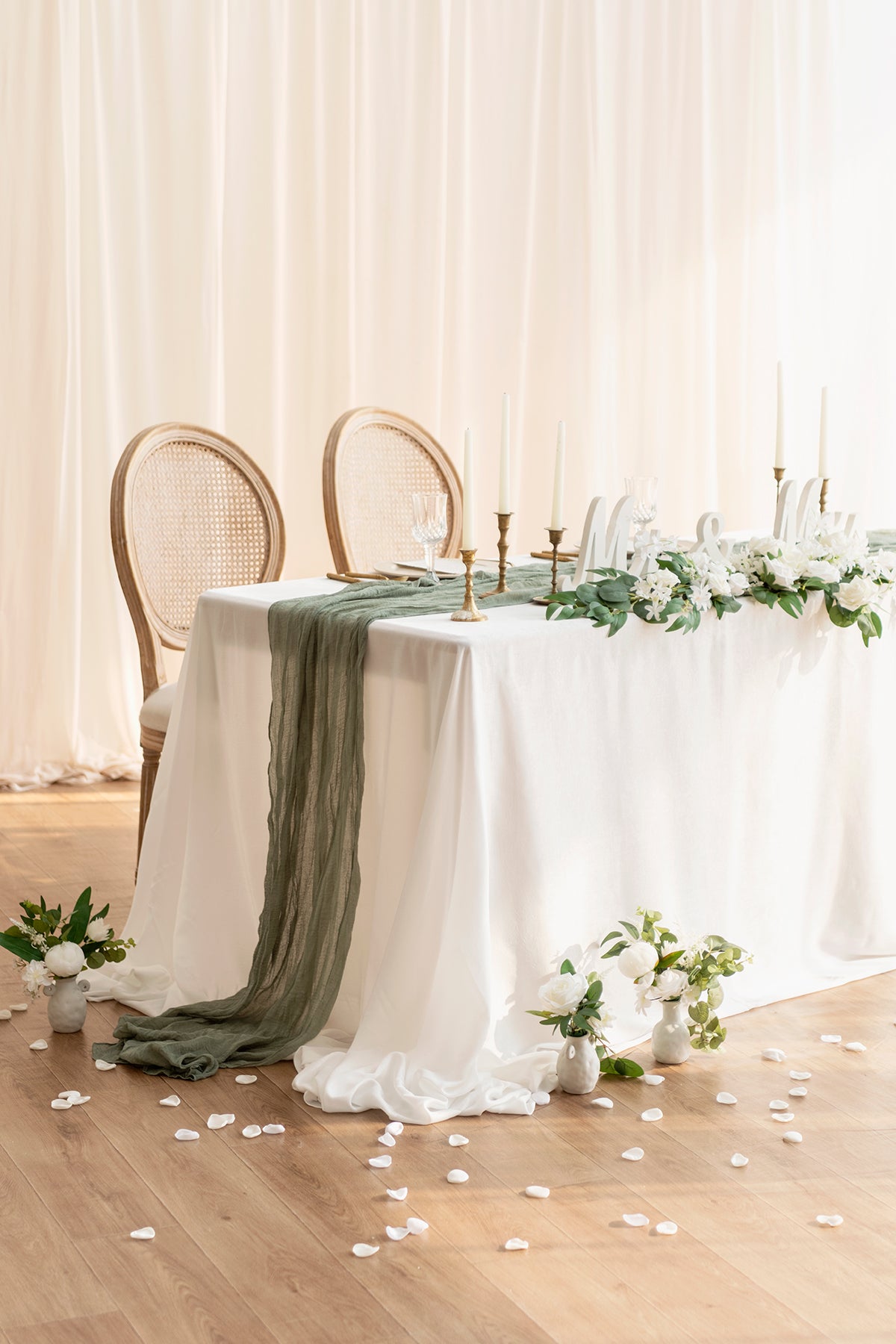Stunning Table Cloths: Improve Your Dining Room Design
Stunning Table Cloths: Improve Your Dining Room Design
Blog Article
Bed Linen Textile Innovations: Checking Out Modern Trends and Creative Applications in Style and Fabric Sector
From sustainable manufacturing approaches to innovative weaving innovations, the development of linen is improving the landscape of the fabric market. As we delve right into the worlds of innovative design applications and the emergence of bed linen blends and crossbreed materials, a new phase unravels in which linen's duty in future fabric developments takes center phase.
Sustainable Practices in Linen Manufacturing
Sustainable practices in bed linen production have come to be progressively important in the textile industry's efforts to minimize ecological effect and advertise honest sourcing methods. Bed linen, a natural fiber originated from the flax plant, uses a variety of advantages such as breathability, longevity, and biodegradability. Nevertheless, traditional techniques of bed linen manufacturing can involve considerable water consumption, chemical use, and energy-intensive procedures.
To deal with these obstacles, numerous fabric producers are taking on sustainable techniques throughout the linen manufacturing process. This consists of sourcing flax from organic ranches that avoid harmful chemicals and chemicals, implementing water-efficient retting strategies to extract fibers from the flax stalks, and making use of green dyes and coatings. Additionally, some firms are buying renewable energy sources to power their production centers and minimizing waste through recycling and upcycling initiatives.
Technological Innovations in Linen Weaving
With the expanding focus on lasting practices in linen production, the textile market is currently observing a surge in technological developments particularly intended at changing the art of bed linen weaving. These innovations are reshaping the way linen materials are created, supplying raised efficiency, quality, and creativity in weaving techniques.
One of the crucial technical improvements in bed linen weaving is the assimilation of computerized looms. These advanced looms are geared up with software application that permits detailed and intricate designs to be woven with precision. By digitizing the weaving process, manufacturers can achieve higher consistency and precision in their bed linen fabrics.
Moreover, innovations in thread spinning technology have allowed the production of finer and more long lasting linen threads - table cloths. This leads to softer and smoother bed linen textiles that maintain their quality even after multiple uses and laundries
In addition, the growth of eco-friendly dyeing processes and coatings for linen materials is getting grip. These lasting techniques not only reduce the ecological influence however also accommodate the raising consumer need for ethically generated textiles.
Creative Design Applications for Bed Linen
Cutting-edge artistic approaches are increasingly shaping the creative layout applications for linen in the fabric sector. Linen's all-natural visual appeal and capability to mix with various other fabrics make it a preferred selection for creating special garments and devices that provide to the environmentally mindful customer.
Moreover, designers are trying out bed linen in home style, utilizing its breathable and resilient nature to craft stylish furnishings such as drapes, bed linens, and upholstery. The texture and drape of linen bring a sense of refinement and comfort to interior areas, including a touch of elegance to contemporary homes.

Bed Linen Blends and Hybrid Fabrics

Crossbreed materials, on the various other hand, take the principle of blending a step better by integrating additional components such as metallic threads, recycled products, or conductive fibers. These ingenious textiles not just broaden the design opportunities however also present functional facets like conductivity, antimicrobial residential properties, or improved resilience. Crossbreed materials are increasingly being utilized in numerous markets, including style, interior decoration, and technological textiles, where the demand for multifunctional products is on the rise.
Bed linen's Function in Future Fabric Innovations

In the world of future fabric developments, bed linen is anticipated to be a key player in the advancement of sophisticated useful fabrics. Developers and scientists are exploring ways to improve bed linen's intrinsic qualities with technological improvements, such as including clever fabrics, nanotechnology, and performance finishes. These developments aim to raise bed linen's efficiency qualities, making it ideal for a more comprehensive series of applications, from activewear to protective clothing.
Furthermore, the combination of linen with other natural or synthetic fibers opens up image source endless possibilities for creating novel textiles with unique homes and performances. By leveraging linen's qualities and checking out ingenious blends, the textile market is poised to introduce exciting developments that satisfy advancing customer demands and sustainability needs.
Verdict
Finally, the expedition of sustainable practices, technical innovations, innovative style applications, linen blends, and its role in future fabric advancements highlight the constant development of linen fabric in the modern-day style and textile market. With a concentrate on technology and creative thinking, the flexibility and environmentally friendly nature of linen make it a beneficial material for producers and designers alike, leading the way for further growths and improvements in the field of fabrics.
As we delve right into the worlds of creative layout applications and the introduction of linen blends and crossbreed materials, a new phase unfolds in which linen's function in future textile innovations takes facility stage.
Exploring the combination of linen with various other fabrics has led to the emergence of cutting-edge blends and hybrid textiles in the modern textile sector. Linen blends offer an one-of-a-kind combination of the characteristics of bed linen with those of other fibers, here resulting in fabrics that have enhanced properties such as boosted toughness, improved draping, and minimized wrinkling.The evolution of linen blends and crossbreed textiles has set the phase for Linen to play a critical duty in driving future fabric developments.In the world of future textile developments, bed linen is anticipated to be a key player in the growth of advanced practical textiles.
Report this page